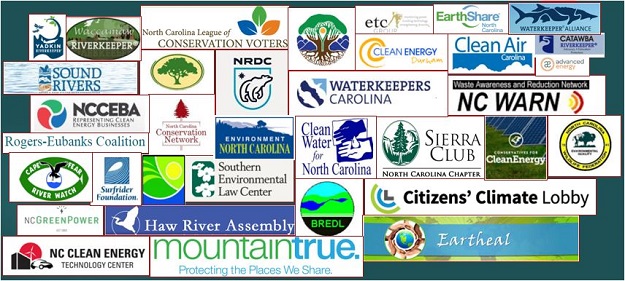Environmentalists like to preach that all life is connected – but they themselves are connected in an intricate web of activists, groups, money and influence. And our revamped Mapping the Left site kicks off by unveiling a new network showing how these links are spread across North Carolina.
As we at Civitas created the Mapping the Left website, we knew that we needed some way to connect and visualize the massive number of groups, people and funders that make up the liberal/progressive Left in North Carolina. Since the website is all about connections, we came up with the concept of networks to illustrate the many links between individuals, groups, funders and yet other clusters of organizations.
The Left made it easy for Mapping the Left to describe their networks. They like to organize as membership groups and build coalitions. That allows them to shift personnel and money around, while providing them cover and obscuring their intentions. The first five networks were created from membership lists of key umbrella organizations: Blueprint NC, Democracy NC, Moral Monday, Together NC and HKonJ. All these networks were illuminated on Mapping the Left, but we knew we would need to include other networks that that may not have a public label or high profile but which nevertheless work together to push North Carolina to the Left.
The Environmental Network will be the second one that we have included outside those with a known membership or partnership list – the Z. Smith Reynolds Foundation (ZSR) network being the first.
Thus far, the Environmental Network is made up of 40 activist organizations. While the groups’ mission statements vary – some focus on sustainable energy, water, air, or even acquiring private lands and converting them to government control – ultimately all of these groups push the climate change/global warming political agenda. It is important to understand exactly what the Left wants when it comes to this agenda. It will impose rules and increase regulations on industry, farming, and land ownership that in the end will eliminate private ownership and development and result in “sky-rocketing” fuel costs along with government takeovers. The Left believes that a dramatic increase in fuel prices will move people to demand alternatives to historically low-cost fossil fuels. They know that as long as fossil fuels stay cheap, their use will rise. Barack Obama forewarned us of his coming energy policy in a 2008 interview:
“Under my plan of a cap-and-trade system, electricity rates would necessarily skyrocket. Even regardless of what I say about whether coal is good or bad,” he added. “Because I’m capping greenhouse gases, coal power plants, you know, natural gas, you name it — whatever the plants were, whatever the industry was, they would have to, uh, retrofit their operations. That will cost money. They will pass that money on to consumers.”
In his book Ecology Wars: Environmentalism as if People Matter, Ron Arnold made a shrewd observation when he said, “… ecology is a science. Environmentalism is a social movement.” We should also add that environmentalism is a political movement as well.
The political influence of groups in Mapping the Left Environmental Network can be seen when Congress and legislature are in session, during election season, and in the courtroom as they attempt (with considerable success) to change laws through the court system.
And that political impact isn’t limited to the ordinary channels of government, for they are often ready to take more radical measures. For example, 10 of the Environmental Network groups belong to the Blueprint NC network. The Blueprint network is comprised of the members (past and present) of Blueprint NC, the coordinating hub for the radical/liberal Left that is generally credited with the strategy memo in 2013 that called for activists to “cripple” North Carolina’s Republican leaders and “eviscerate the leadership and weaken their ability to govern.”
Nor are these necessarily tiny groups running on shoestring budgets. In North Carolina, in a 10-year period (2003 – 2013) more than $37 million has been funneled to 27 of those activist groups. Of that, the Z. Smith Reynolds Foundation can be credited with giving $14,365,900 to North Carolina groups whose mission is stop global warming or, as they are more likely to say these days, “climate change.” The role ZSR plays in the environmental movement is significant since we know it is the primary funder and organizer of the progressive movement in North Carolina.
Outside organizations also play a prominent role. Groups such as the Natural Resources Defense Council (NRDC), Southern Environmental Law Center (SELC), Sierra Club and NC WARN are overtly political and work in North Carolina’s elections to defeat conservatives while promoting candidates on the Left side of the aisle. Some of the groups are on the airwaves now, already pushing their radical agenda for the 2016 presidential election. Other groups, such as local riverkeeper’s organizations, quietly push their agenda and call for extreme regulations on family farms.
Then there are groups such as California-based Citizens’ Climate Lobby (CCL) based that have no discernable connection to North Carolina but somehow joined with the radical elements of the Left in North Carolina for the Moral Monday protests. Among CCL’s claims is the wild charge that global warming can be blamed for the “mass extinction of animal species because they cannot move fast enough or adapt soon enough to the changes in the habitat.” This type of outrageous claim is typical of the groups in the Environmental Network: made without proof or with ever-increasingly questionable data.
Today’s extreme environmental agenda is the essence of today’s political liberal Left. Their policies seek to take away our freedoms – speech, property and the ability to live one’s life as we see fit to move from place to place without government interference. Shining the light on North Carolina’s political environmental groups will expose their extreme agenda of government expansion and control. We invite you to explore this network, and the rest of Mapping the Left, and we think you’ll see what we mean.


